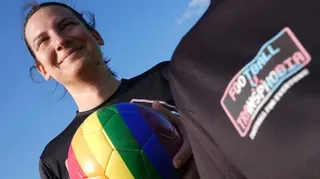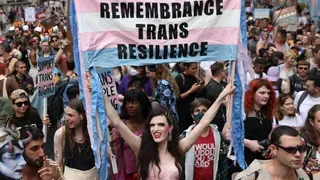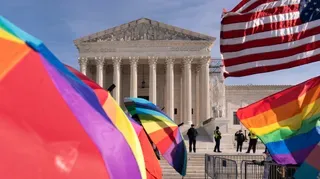June 20, 2008
Youth Commission finds state lacks data on trans, other LGBT youth populations
Michael Wood READ TIME: 3 MIN.
In its 2008 annual report released this month, the Massachusetts Commission on GLBT Youth found the state lacking in its research on the health and safety needs of transgender youth and other more marginalized subsets of the LGBT youth community.
Though the state conducts research into the health and safety of gay, lesbian and bisexual youth statewide, several populations of LGBT youth fly under the radar. In particular the commission found that the state's surveillance programs, particularly the Youth Risk Behavior Survey (YRBS), fail to document the experiences of transgender youth, youth not in the school setting, and youth for whom English is not their primary language. The commission also recommended the state expand its research on LGBT youth to include more information on LGBT youth of color.
The YRBS, which is conducted by the Department of Education (DOE) every two years, surveys students in public schools across the state about a range of health and safety issues, including school violence, suicide attempts, drug use and sexual activity. The survey, which asks questions about sexual orientation and behavior, has shown that LGB youth face higher rates of violence, suicide attempts, and other risk factors than their peers, but commission executive director Lisa Perry-Wood said its failure to ask about gender identity or expression is a major blind spot.
"They're not captured in the Youth Risk Behavior Survey, and we're just beginning to try to work with the Department of Public Health and the DOE [to try to rectify the situation]," said Perry-Wood.
DOE has released preliminary data from the 2007 YRBS showing that since the previous survey in 2005 there has been an increase for LGB students in the rates of serious suicide attempts, assaults and skipped school days due to fear of assault and harassment. LGB youth experience each of those risk factors at significantly higher rates than their straight peers, and in particular were six times more likely to have made a serious suicide attempt.
Perry-Wood said the YRBS also fails to capture the experience of homeless youth, particularly those not in the schools. The commission is working with DPH to try to expand surveillance efforts to include homeless LGBT youth to allow the state to determine the extent of the problems they face.
"From that we would want to create a plan to ensure the services meet the needs over the next three to five years. We certainly know anecdotally from people working in the shelter system with homeless youth, we know it's an increasing problem," said Perry-Wood.
The YRBS does allow the state to compare the experiences of LGB students of color to their white peers, and historically the survey has shown that LGB students of color face greater risk factors than their white LGB peers. Perry-Wood said the commission believes that the state still has too little information on LGBT youth of color, and the commission believes the state should expand its research tools to gather more information on the risks facing students in specific schools and to look at how those risks affect youth of color, transgender youth, and other under-represented populations.
Perry-Wood said the commission expects that it will take time for the state to expand its research efforts, but she said they remain determined to make the case for that expansion.
"When you're working with large state bureaucracy, change happens slowly, and we're aware of that, so we're trying to nudge things along. ... That's our role, to keep moving things to the next step," said Perry-Wood.
Michael Wood is a contributor and Editorial Assistant for EDGE Publications.







